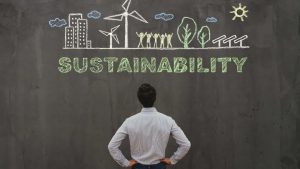With the world becoming increasingly aware of the need to be more environmentally conscious, it is important that businesses also strive to minimise their environmental footprint. Future-proofing your supply chain is one way to reduce your environmental impact while continuing to provide quality products and services. Eco-friendly strategies such as reducing waste, optimising transportation, and utilising sustainable materials can help you create a more efficient, environmentally responsible supply chain.
By implementing these strategies, you can reduce your carbon footprint, save money, and ensure your business meets its sustainability goals. Furthermore, eco-friendly strategies can help you edge out your competition in the market and build a solid reputation for being a responsible business. By taking proactive steps to future-proof your supply chain, you can not only reduce your environmental impact but also create a more effective and efficient business.
7 Eco-Friendly Strategies to Help Future-Proof Supply Chain
1. Improve Your Skills With A Supply Chain Management Online Course

The first step in future-proofing your supply chain is to ensure that you have the right skills and knowledge to do so. You can do this by taking a Sustainable Supply Chain Management online short course from the University of Cambridge Institute for Sustainability Leadership (CISL), which will provide you with the knowledge and expertise you need to create a sustainable and efficient supply chain. This course will cover topics such as the basic supply chain principles, analytics, the role of technology and mitigating the challenges a VUCA (Volatile Uncertain Complex and Ambiguous) world poses, as well as many other topics that will help you will learn how to identify inefficiencies and develop best practices.
2. Reduce Waste

Reducing waste is an important part of future-proofing your supply chain. By reducing the amount of waste produced, you can reduce your environmental impact and save money. There are several ways to reduce waste in your supply chain management, such as improving packaging, reusing materials, and recycling.
Improving packaging can help you reduce waste by ensuring that products are not damaged or lost in transit. Reusing materials can help you reduce the number of new materials used and save more money. Finally, recycling can help you turn waste into usable material and reduce the amount of waste that needs to be disposed of.
3. Optimise Transportation

Transportation is an integral part of any supply chain, but it can have a significant environmental impact. To reduce your environmental impact, it is important that you optimise your transportation processes. This includes using more efficient vehicle types, such as electric vehicles and optimising routes to reduce the distance travelled.
4. Utilise Sustainable Materials

Using sustainable materials is another way to reduce your environmental impact and future-proof your supply chain, such as recycled plastics and biodegradable packaging. Using sustainable materials can help to reduce emissions associated with the production and transportation of materials, as well as reduce the amount of waste generated. Additionally, using sustainable materials can help to reduce costs associated with production and transportation. By pioneering sustainable materials, you can create a more environmentally responsible supply chain and help to reduce your environmental impact, which will, in turn, show your target market that you care about the world and boost your brand image.
5. Embrace Technology

Technology is becoming increasingly important for creating an efficient and eco-friendly supply chain. There are a number of technologies that can be used in the supply chain. For example, you can use route mapping software to identify the most efficient route for each shipment or use automation to reduce manual labour. Finally, you can use technology to monitor the environmental impact of your supply chain. For example, you can use sensors to monitor emissions or software to monitor energy consumption. Whatever you choose, embracing technology is a great way to future-proof your supply chain.
6. Invest In Supply Chain Management Software

Investing in supply chain management software is another key step to creating an eco-friendly supply chain. This type of software can help you manage your inventory more effectively, reduce waste, and optimise your transportation processes. Additionally, it can provide you with valuable insights into the supply chain, allowing you to identify areas for improvement and adjust your processes accordingly.
When selecting supply chain management software, it is important to ensure that it meets your specific needs. Additionally, it is important to ensure that the software is user-friendly and can be easily integrated into your existing systems.
7. Localise Your Stock Inventory

Localising your stock inventory is an effective way to reduce your environmental impact. By sourcing materials and products locally, you can reduce the amount of transportation required and reduce your carbon footprint. Additionally, you can support local businesses and help to create a sustainable economy. Localising your stock inventory can also help you to reduce costs as it reduces the amount of transportation required and your shipping costs.
Wrapping Up
By taking proactive steps to future-proof your supply chain, you can not only reduce your environmental impact but also create a more effective and efficient business. Furthermore, eco-friendly strategies can help you edge out your competition in the market and build a solid reputation for being a responsible business.









Leave feedback about this